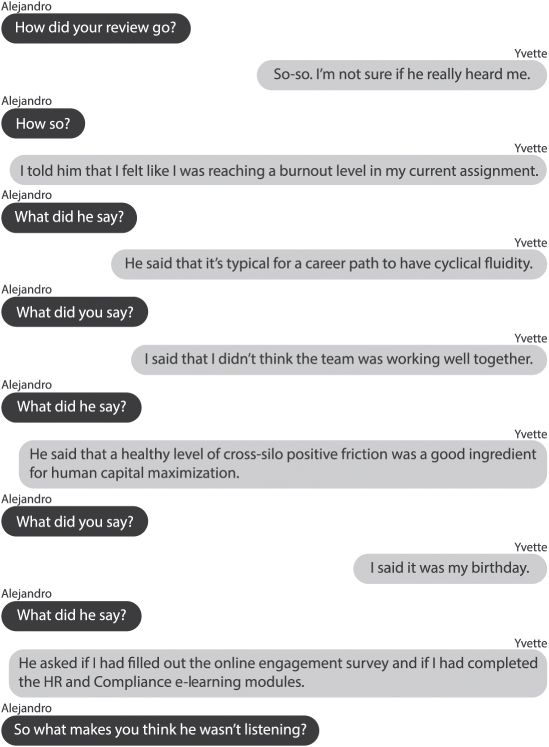Chapter 8Listening

There's a reason that listening is the first of the Big Five behaviors we cover. It's perhaps the most important, and it's also the one that seems to show itself as critical and essential throughout most stages of the innovation process.
As we wrote in a recent article, “Listening intently and being aware of all the verbal and nonverbal cues in communication is harder than most of us admit. There's a strong psychological phenomenon called confirmation bias in which human beings tend to search for, focus on, and see information that confirms beliefs or opinions they already hold, especially if the issue at hand is emotionally charged. Noticing details and listening openly is a key behavior needed to increase our innovation fitness. As we already discussed, innovation is rooted in both discovering needs and insights from the environment as well as collaborating with teammates and stakeholders on finding a solution” (Imaretska and Sweeney 2015).
Think of how many different ways we have to listen in order to innovate. We need to listen to our customers in ways that tell us more than just what we should build for them in order to determine what they really need. Sometimes they don't know—so we have to listen for them. We need to listen to ourselves, our instincts, our guts—both to find sparks of innovation and to identify our own innovative barriers or biases. ...
Get The Innovative Mindset now with the O’Reilly learning platform.
O’Reilly members experience books, live events, courses curated by job role, and more from O’Reilly and nearly 200 top publishers.

